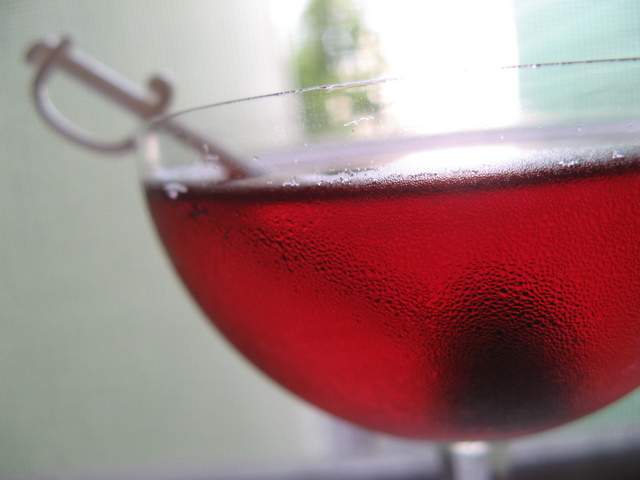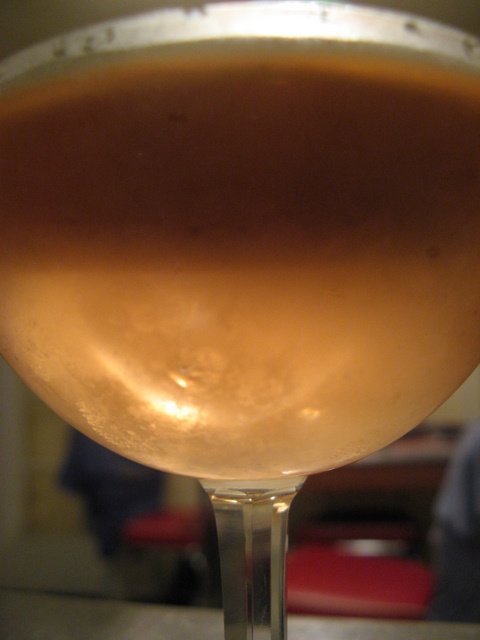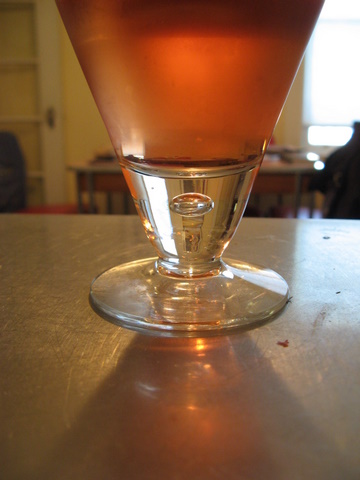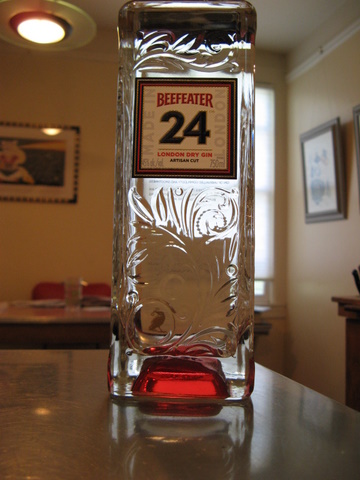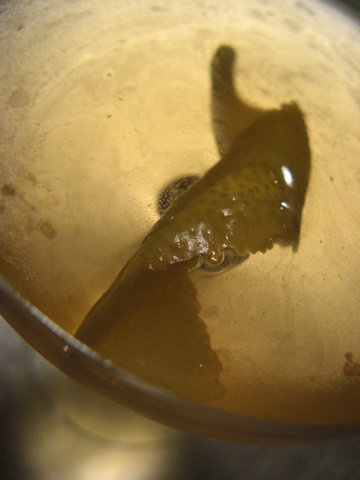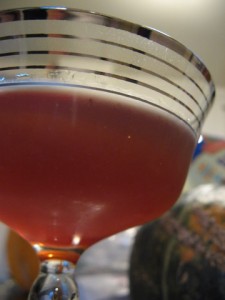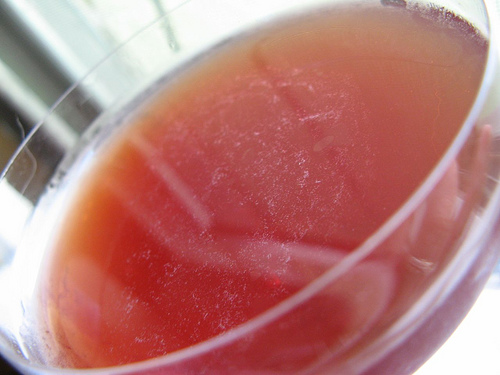
Dandy Cocktail
1/2 Rye or Canadian Club Whisky. (1 oz Rittenhouse Bonded Rye Whiskey)
1/2 Dubonnet. (1 oz Vergano Americano)
1 Dash Angostura Bitters.
3 Dashes Cointreau. (1 tsp. Cointreau)
1 Piece Lemon Peel.
1 Piece Orange Peel.
Shake (stir, please) well and strain into cocktail glass.
First, I find Dubonnet, at least as we have it here, made in the good old USA, to be a pretty boring ingredient. I’ve heard rumors that the stuff they have in France and other countries is superior, but I haven’t ever had it in France to know.
Anyway, since I’m out of Dubonnet Rouge and don’t have any Lillet Rouge, I thought I’d sub in the Vergano Americano. Not traditional, I suppose.
I interpreted the rest of the instructions literally, cutting two wide swaths of peel, squeezing them into the ingredients in the mixing tin and dropping them in. Then stirring them with everything else.
The use of peels as an ingredient makes me think of 19th century drinks like Cobblers, though the use of Cointreau and Dubonnet, seems to place the cocktail more squarely in the 20th Century. Perhaps a 20th Century adaptation of a 19th Century recipe?
One interesting note I found in the 1900 edition of “Cocktail Bill Boothby’s American Bartender”:
Some of my recipes for the manufacture of cocktails order the dispenser to twist a piece of lemon peel into the glass in which the drink is to be served; but in some establishments this is forbidden, the bartender being ordered to twist and drop the peel into the mixing glass and strain the peel with the ice when putting the drink into the serving glass. This is merely a matter of form, however, as the flavor is the same in both cases.
So, I guess, this recipe came from one of those establishments!
Anyway, this re-imagined Dandy is pretty fantastic. I’ve made it before with Dubonnet Rouge and thought it kind of “meh”. A slightly tweaked Manhattan. With the Americano, it ends up more similar to a Creole Cocktail, but is quite spicily distinct. With the Americano’s bitter Quinine bite giving more structure, at least to my taste, than the combination of sweet vermouth and Amer Picon in the Creole. The milder flavor of the Rittenhouse seemed more appropriate rather than the Sazerac Straight or Wild Turkey Rye, but I’m sure they would also be quite tasty.
Definitely something I’ll make again.
This post is one in a series documenting my ongoing effort to make all of the cocktails in the Savoy Cocktail Book, starting at the first, Abbey, and ending at the last, Zed.

